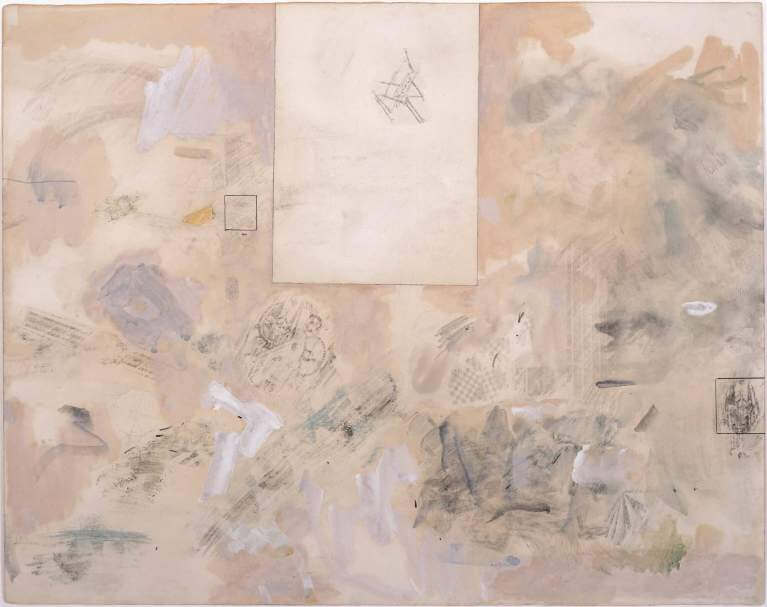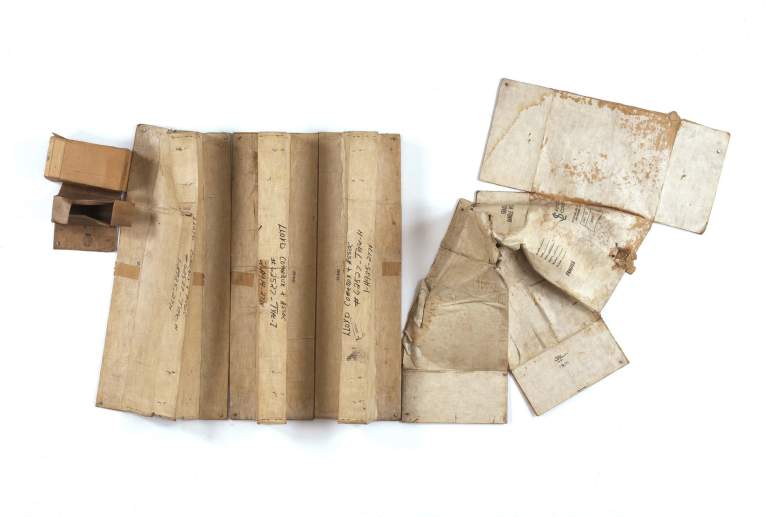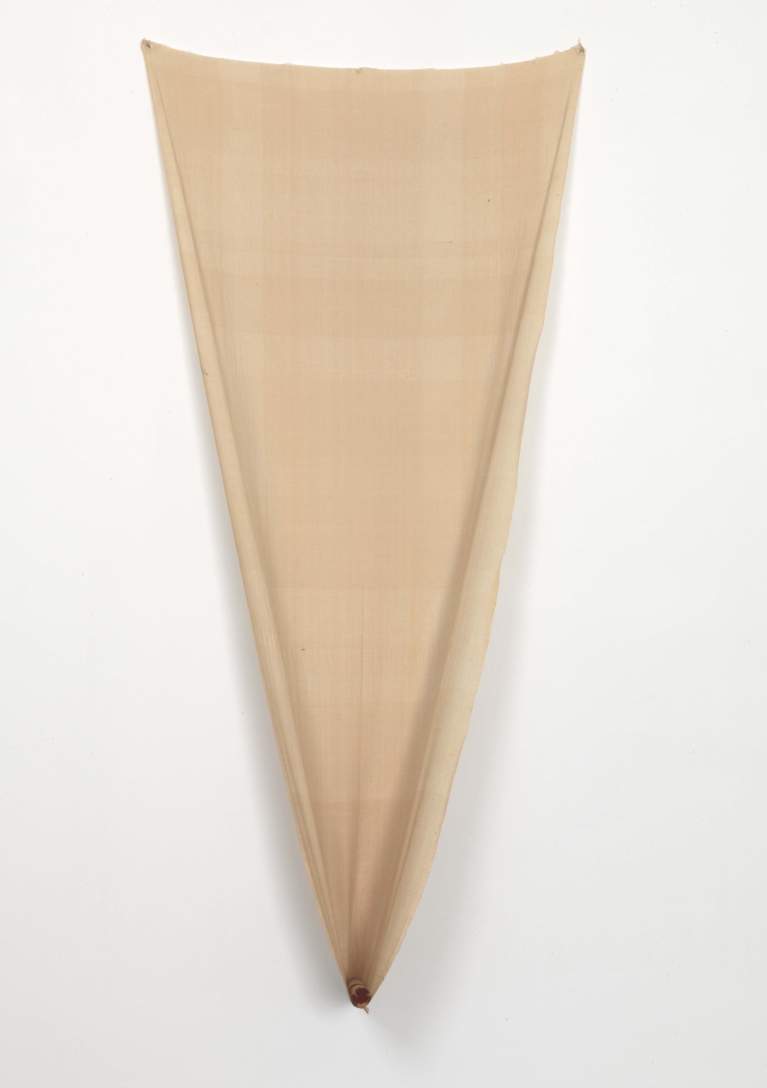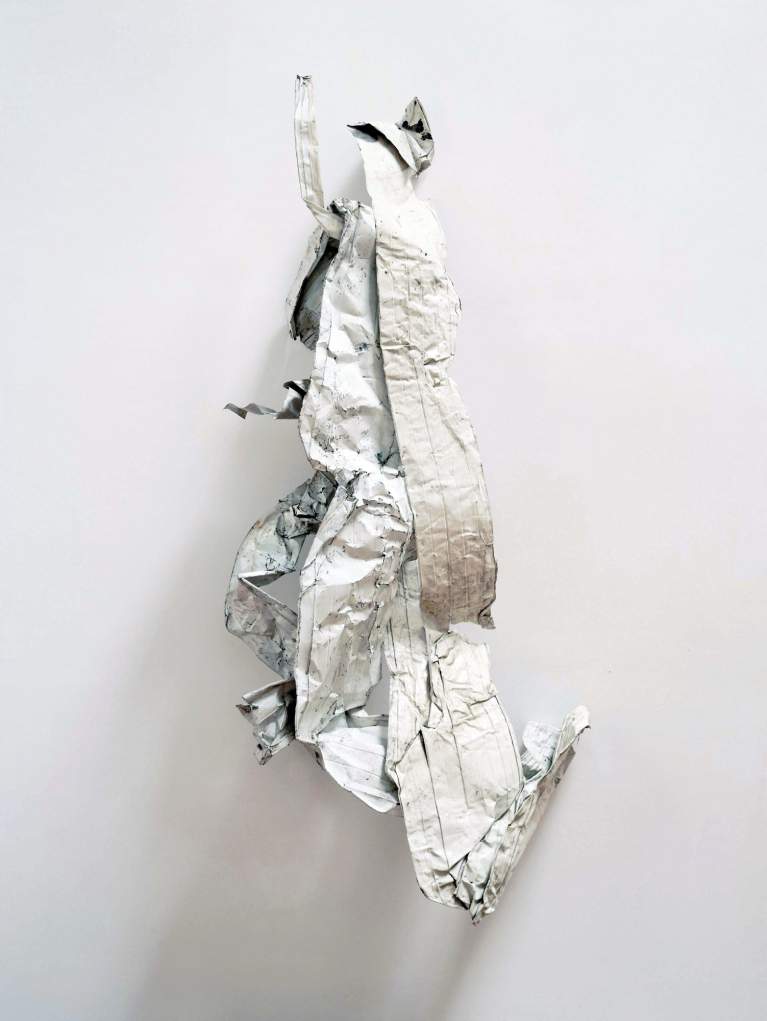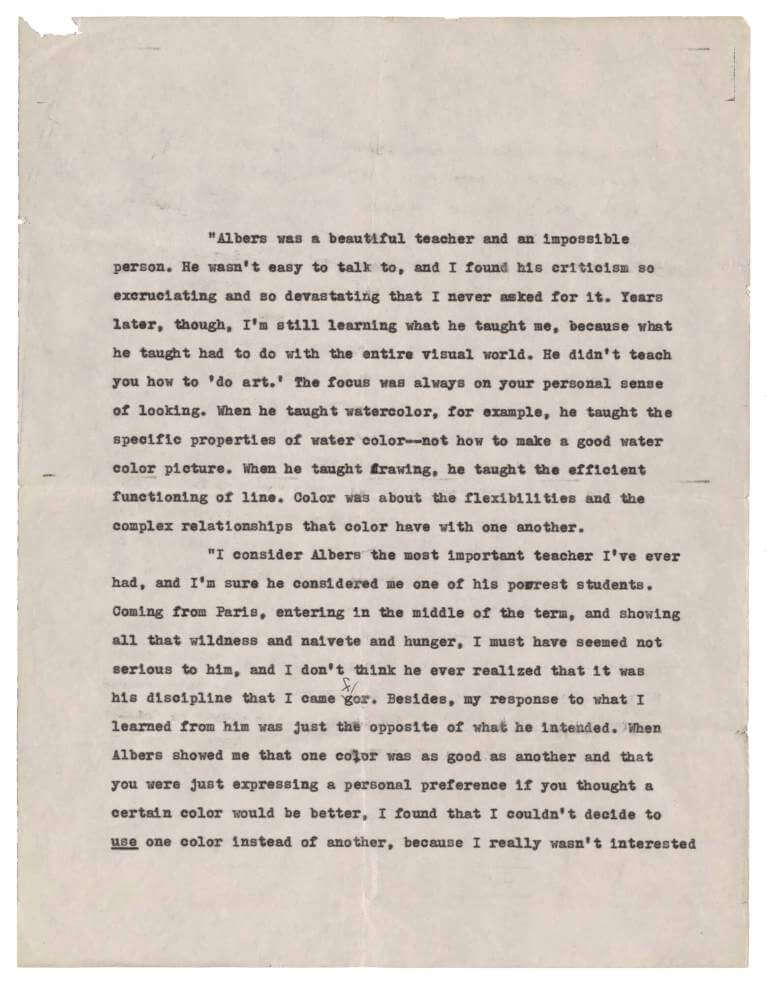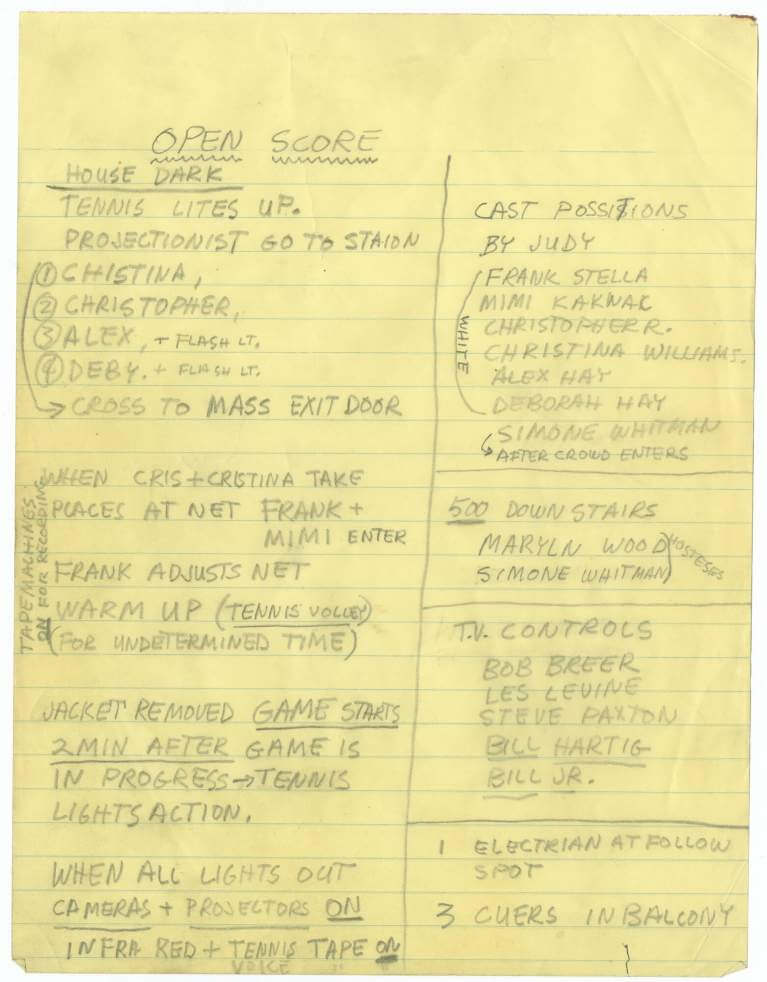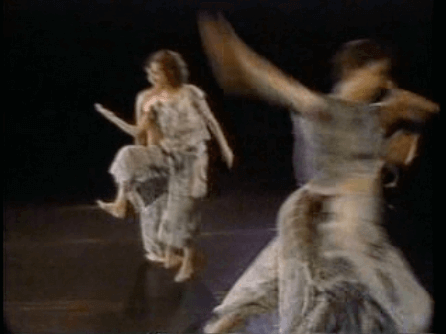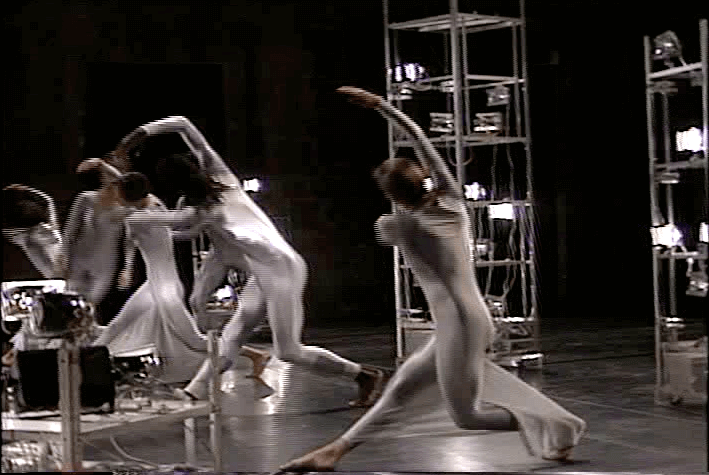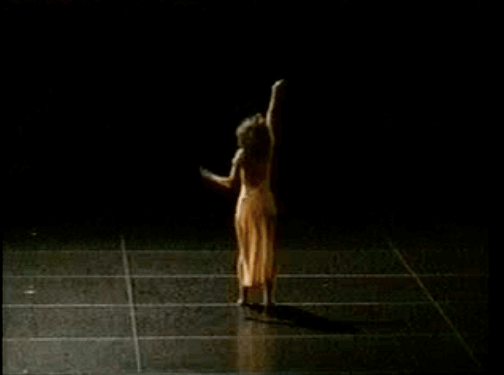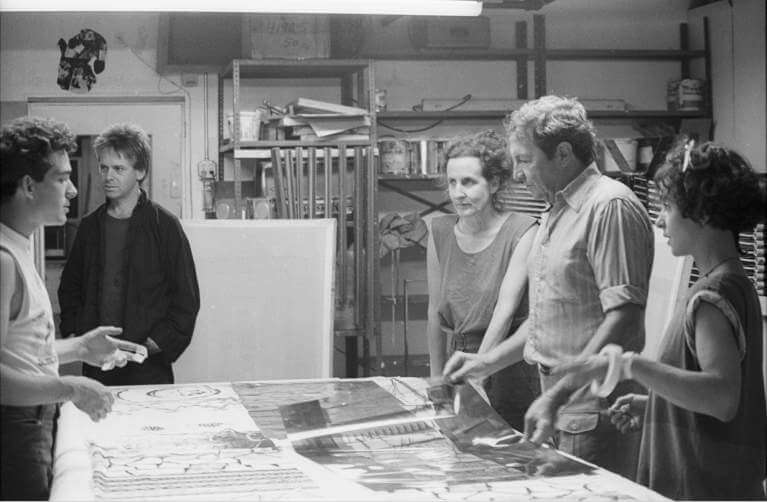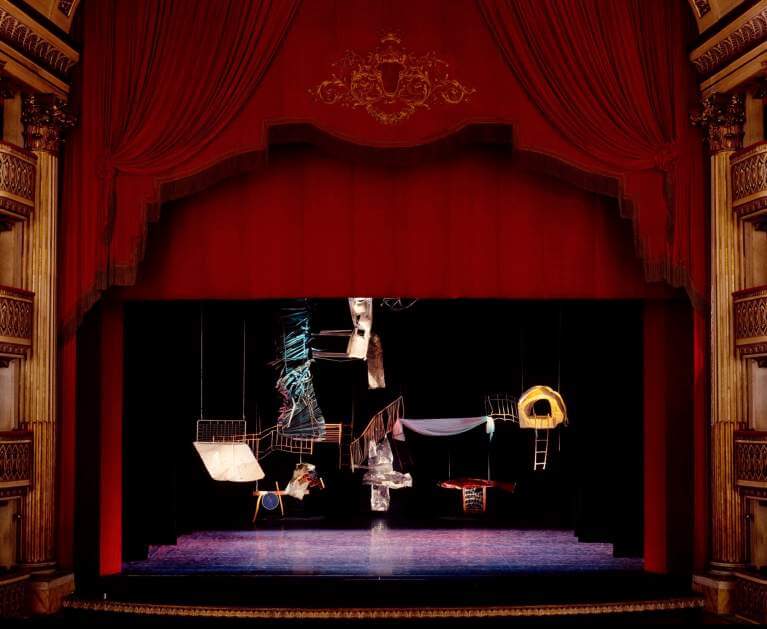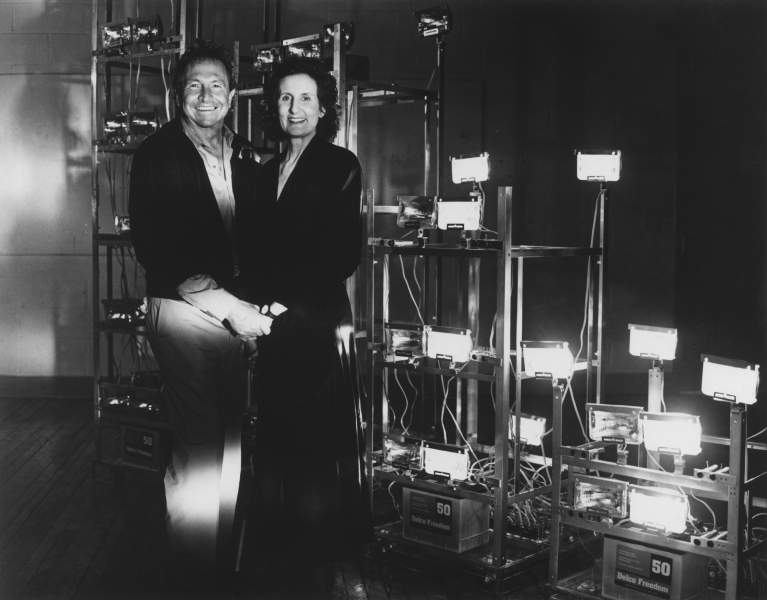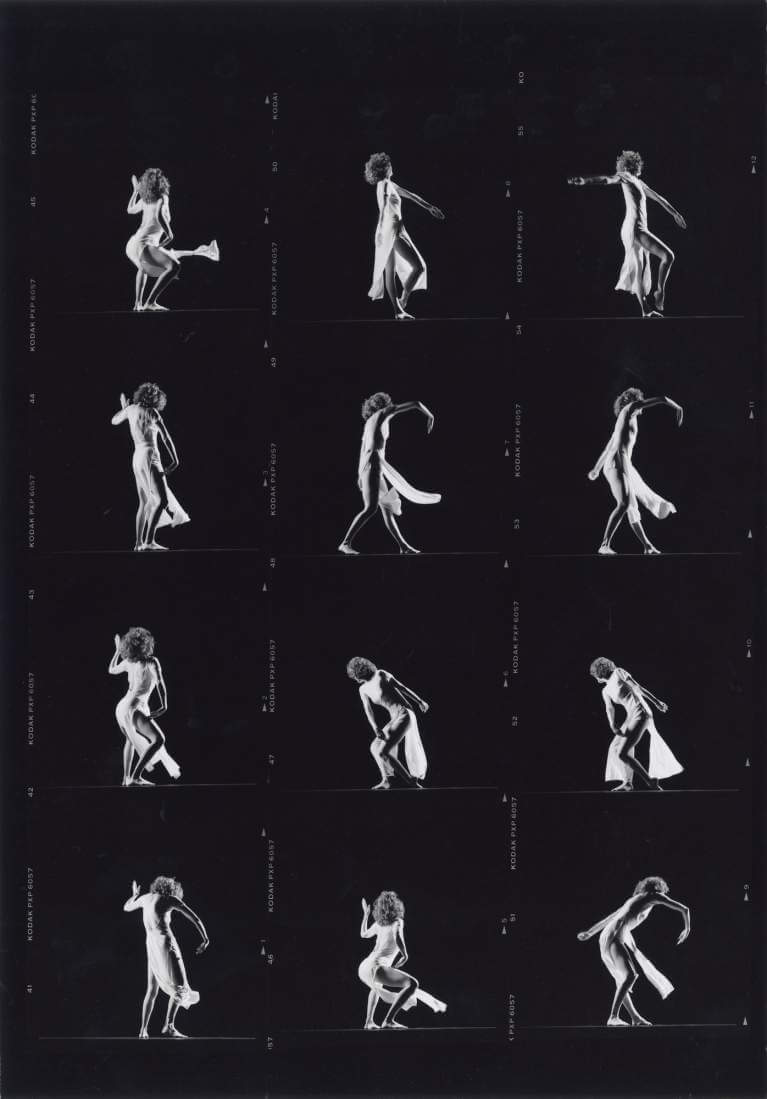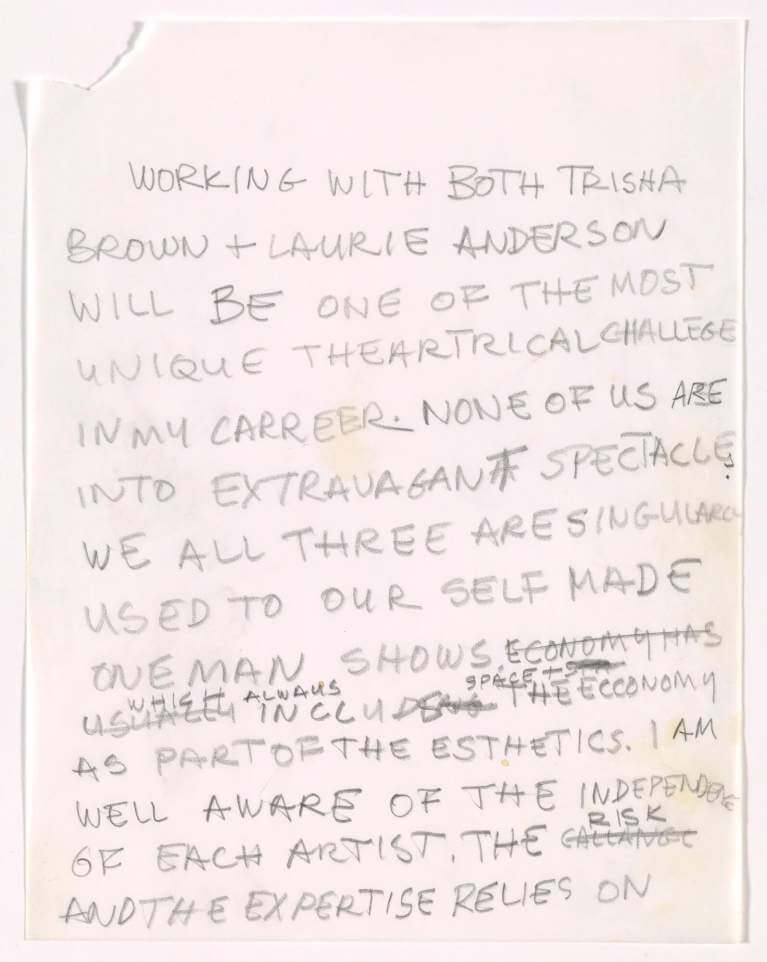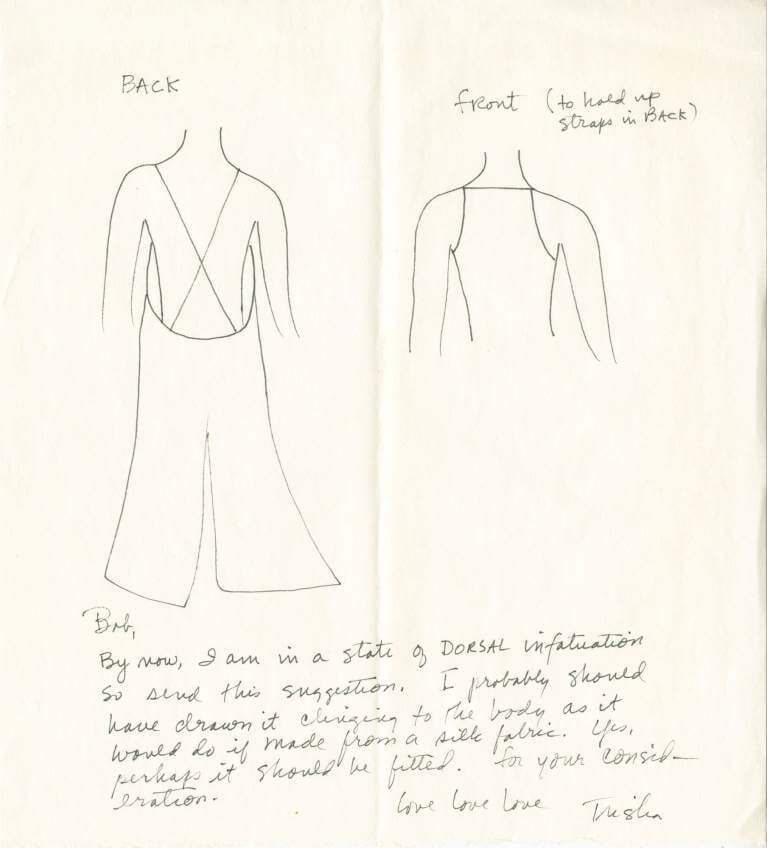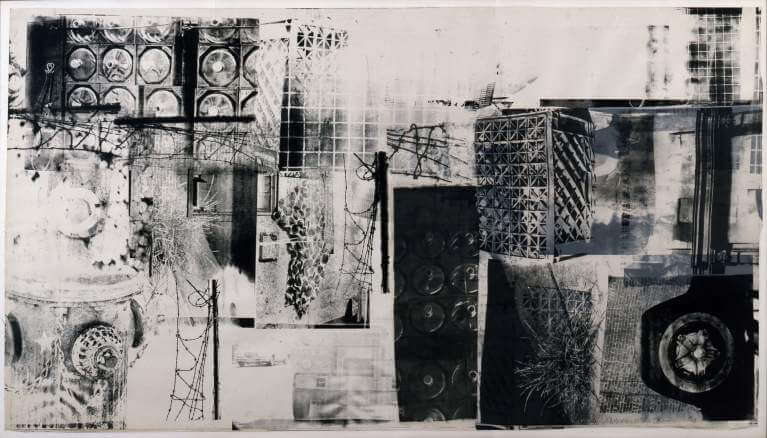Each Theme features a curated selection of artworks and archival materials, providing a focused look at topics of interest.
While Rauschenberg is known as a brilliant colorist, this lightbox explores the artist’s periodic retreat to low- or no-color artworks throughout his career.
In this lightbox, Jonas Albro, Eliana Blechman, and Kevin Geraghty explore Rauschenberg's Hoarfrosts (1974–76), a series of artworks comprised predominantly of unstretched fabric featuring images and texts transferred from magazines and newsprint through a solvent process.

Robert Rauschenberg proofing the Hoarfrost Editions, assisted by Gemini G.E.L. printers. Los Angeles, CA, 1974. Photograph © 1974 Sidney B. Felsen.
This is a re-creation of Rauschenberg's first solo exhibition at the Betty Parsons Gallery, New York, May 14 - June 2, 1951.
This lightbox presents posters made for a variety of purposes over the course of Rauschenberg’s career: from those designed to advertise his own exhibitions and the work of his collaborators, to promotional pieces for the many social and political causes he supported.
In this lightbox, the Red Paintings (1953–54) explore the combination of paint, collage, and found objects that anticipate the three-dimensionality of Rauschenberg’s celebrated Combines begun shortly thereafter.
Tethering wall and floor elements was a recurrent device used by Rauschenberg to blur and transcend the distinction between painting and sculpture.
Rauschenberg’s transfer drawings combine imagery excerpted from printed mass media with hand drawn and painted passages to create pictorial poems.
Rauschenberg’s encounters and collaborations with other artists at Black Mountain were critical to the development of his artistic sensibility.
Rauschenberg’s dedication to art and technology crossover
Rauschenberg’s earliest explorations of avant-garde dance and performance
Trisha Brown and Rauschenberg's life-long friendship and performance collaborations.
Rauschenberg’s collaborative relationship with choreographer Merce Cunningham




